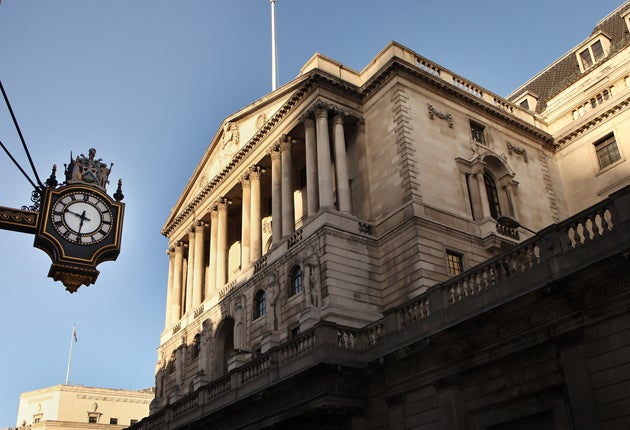It's better to save a little than nothing at all
With interest rates low, and set to stay that way, Chiara Cavaglieri investigates the best ways for savers to maximise their returns

With the Bank of England once again deciding to keep the base rate at the historic low of 0.5 per cent, as expected, now may not seem like the best time for savers to put their money aside. To make matters worse, many of the best fixed-rate savings returns have dwindled in the past few months, leaving savers with fewer options.
The average rate for a one-year fixed savings account in October, for instance, was 3.23 per cent, according to Moneyfacts. For January that average stands at just 3.07 per cent. In the same period, the average rate for a five-year fixed account has fallen from 4.77 per cent to 4.56 per cent.
"Unfortunately, there seems little light at the end of the tunnel for savers. Interest rates are likely to remain at these low levels for at least six months and even if they were to double or quadruple from where they are now, saving rates would still be low," says Danny Cox, from independent financial adviser Hargreaves Lansdown.
Long-term fixed accounts do still offer the best savings rates on the market, but these require savers to lock away their money for up to five years. State Bank of India tops the best-buy tables with a five-year bond at 5.25 per cent but this is for deposits over £10,000 (Halifax pays 5.15 per cent on deposits over £500). For medium-term accounts, ICICI Bank UK is top with a rate of 4.7 per cent, fixed for three years, but if the base rate goes up as quickly as it went down then these offers will become uncompetitive in double-quick time.
"For fixed-term bonds, don't tie your money up for more than 12 months. There are many three, four and five-year fixed term bonds with attractive headline rates. However, It is important to be flexible. Interest rates could be completely different in 12 months' time," says Mr Cox.
Against this backdrop, what are the best deals out there?
The first port of call for any saver is to make the most of the individual savings account (ISA) allowance and the tax breaks these offer.
For an instant-access cash ISA, Standard Life is offering the top rate at 2.65 per cent on deposits from just £1. This account allows holders to transfer money from previous years' ISAs and allows withdrawals without notice or penalty. For a fixed-rate ISA, Halifax pays 3.5 per cent on deposits of at least £500. Cheltenham & Gloucester pays 3.5 per cent for a two-year fixed ISA, but only requires a deposit of £100.
"My advice would be for people to consider moving money into a shares ISA and ideally a tracker fund. People should be using their ISA allowance to support their pension planning and should therefore be investing in equities rather than cash over the long term," says Jasmine Birtles, the founder of financial website Moneymagpie.com.
Right now, anyone aged 50, or older, can invest £5,100 in a cash ISA this tax year, while everyone else can only invest £3,600 until the increased ISA allowance kicks in for everyone else when the new tax year starts in April.
Get a free fractional share worth up to £100.
Capital at risk.
Terms and conditions apply.
ADVERTISEMENT
Get a free fractional share worth up to £100.
Capital at risk.
Terms and conditions apply.
ADVERTISEMENT
Otherwise, there are some competitive variable rate accounts such as the 30-Day Postal Saver from Cheshire Building Society, which pays 3.25 per cent with a minimum deposit of £1,000. But the rate does include a 1 per cent bonus for 12 months, so it would be wise to shop around again once the bonus falls away. For smaller deposits, Saffron Building Society tops the internet chart with a rate of 2.85 per cent.
Regular savers are also a good option for anyone building up their first savings pot. These have relatively strict terms and conditions, requiring the discipline to save on a monthly basis. Principality Building Society has a regular saver paying 4.5 per cent on monthly deposits of between £20 and £500. This rate is fixed for one year and doesn't allow early access or withdrawals. For a less restrictive account, Barclays pays slightly less at 4.25 per cent for its fixed-rate regular saver. This account requires deposits of between £20 and £250 per month and withdrawals are allowed. However, the rate drops to a still decent 3.03 per cent in any month that a withdrawal has been made.
"Anything that encourages you to put money aside regularly has to be a good thing," says Ms Birtles. "If it helps you to be more disciplined and build up a savings pot it's worth looking into – even if the amount is small and the interest rate isn't the best around."
Join our commenting forum
Join thought-provoking conversations, follow other Independent readers and see their replies
Comments
Bookmark popover
Removed from bookmarks